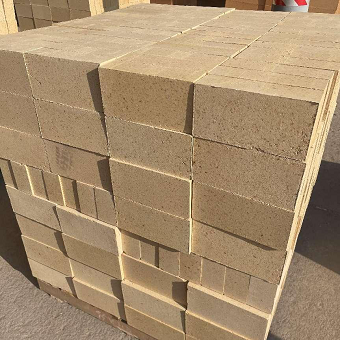Process steps for producing high-class alumina brick by molding
Most of the simple and thick alumina brick products are manufactured by a molding process. The so-called molding method (also known as the semi-dry pressing method) is to place a blank with a small amount of binder and a ratio of coarse particles and fine powder in a metal mold and press it on a press to form.
For high-class alumina brick, namely, molding, why the granularity of mud should emphasize the combination of coarse, medium, and fine, here, it is necessary to explain.

First, the raw materials are pulverized to a certain fineness, the purpose is to have more contact surfaces between the particles, which is conducive to solid-phase reaction and sintering, but this is not entirely the case for compression molding. Because the finer the powder particles, the larger the specific surface area and the larger the loose volume of the powder. On the contrary, if the mud materials are all relatively coarse particles, it is also difficult to compact, and because the contact surface between the particles is reduced, the distance between the centers of the particles increases, which is not conducive to the full progress of the solid-phase reaction. Therefore, it is required to have a combination of coarse and fine particles in the ingredients; second, as mentioned before, when the same particle size is used for stacking, the void ratio is 26% to 47.6% (see Table 10-4-1). The bulk density must be matched with particles of different particle sizes so that the small particles are filled into the gaps between the large particles. Third, proper particle collocation can reduce the shrinkage of the green body, which is beneficial to control the size of the green body. Of course, the above three points need not be overemphasized when forming a blank with a very small size.
Most of the coarse particles used for compression molding are made of finely ground powder with a binder added to make coarse particles with good fluidity. Such coarse particles are customarily called false particles.
-

Silicate fire brick
Silicon thermal insulation refractory brick refers to the thermal insulation refractory products made of silica as the main raw material, with a SiO2 content of no less than 91%. In addition to the heat insulation perfor··· -

silica bricks manufacturing process
1.1 Determination of raw material ratio and particle compositionThe raw materials for making silica bricks are silica and waste bricks containing more than 96% SiO2, in addition to lime, mineralizers and organic binders.··· -

Alumina hollow ball bricks
Alumina hollow ball bricks are made of alumina hollow balls and alumina powder as the main raw materials, combined with other binders, and fired at a high temperature of 1750 degrees. It belongs to a kind of ultra-high t··· -

Anti-stripping high alumina brick for cement kiln
Anti-stripping high alumina bricks are made of high alumina bauxite clinker, mullite, kyanite, zircon sand, and binder first through granulation and powdering processes, mixed in a certain proportion, then pressed into s···

